Abstract
In a search for a reproducible means of evoking different types of emotional stress it was found that in spite of increased adrenaline secretion slowing of the heart occurred when watching violent television programmes. Further evidence of increased vagal tone was provided by the “sinus arrhythmia” effect, a widening of the gap between the maximum and minimum heart rates during the respiratory cycle in parts of the humour, violence, and suspense sections of the television programme.
Groups of people taken to see two particularly violent films showed similar evidence suggesting vagal overactivity, together with increases in plasma free fatty acids and decreases in triglycerides. As these changes occurred even with β-blockade it is suggested that they might be caused by non-sympathetically mediated changes in the levels of hormones, such as growth hormone, producing lipolysis.
The ability to assess objectively an individual's reaction to viewing violence might make it possible to judge the likely social impact of violent films and television programmes.
Full text
PDF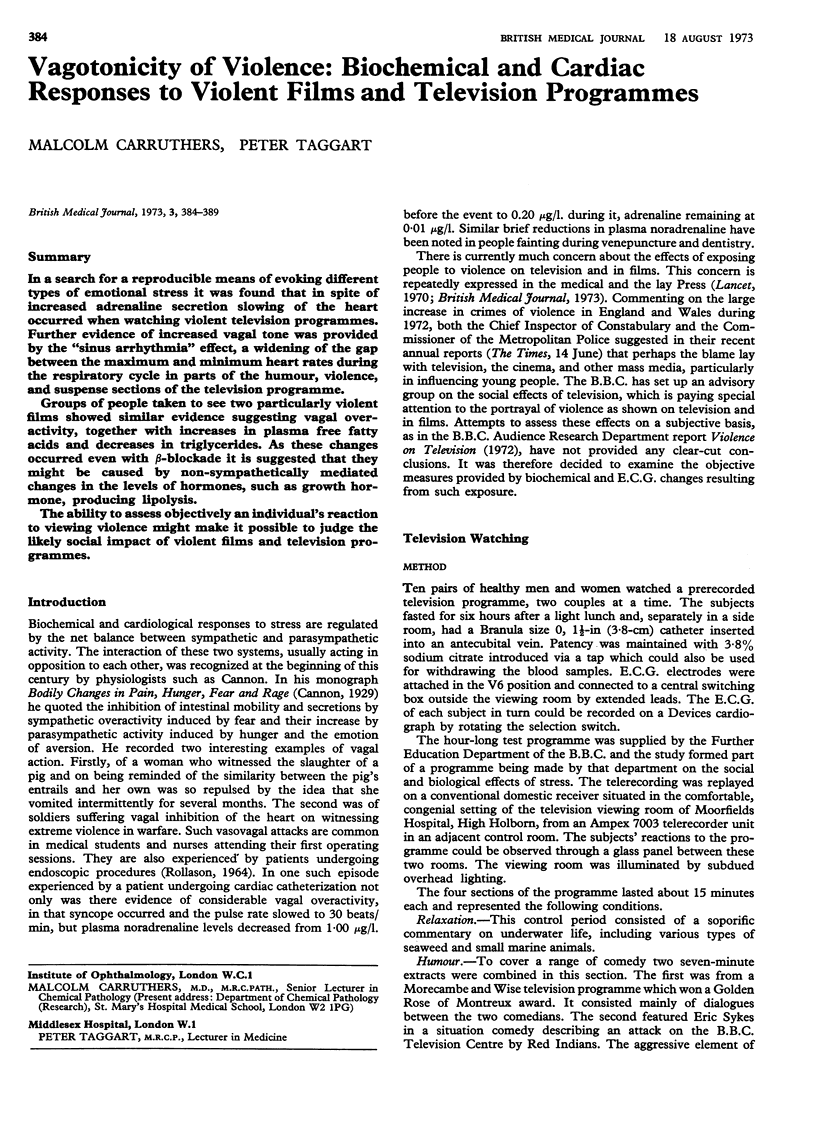
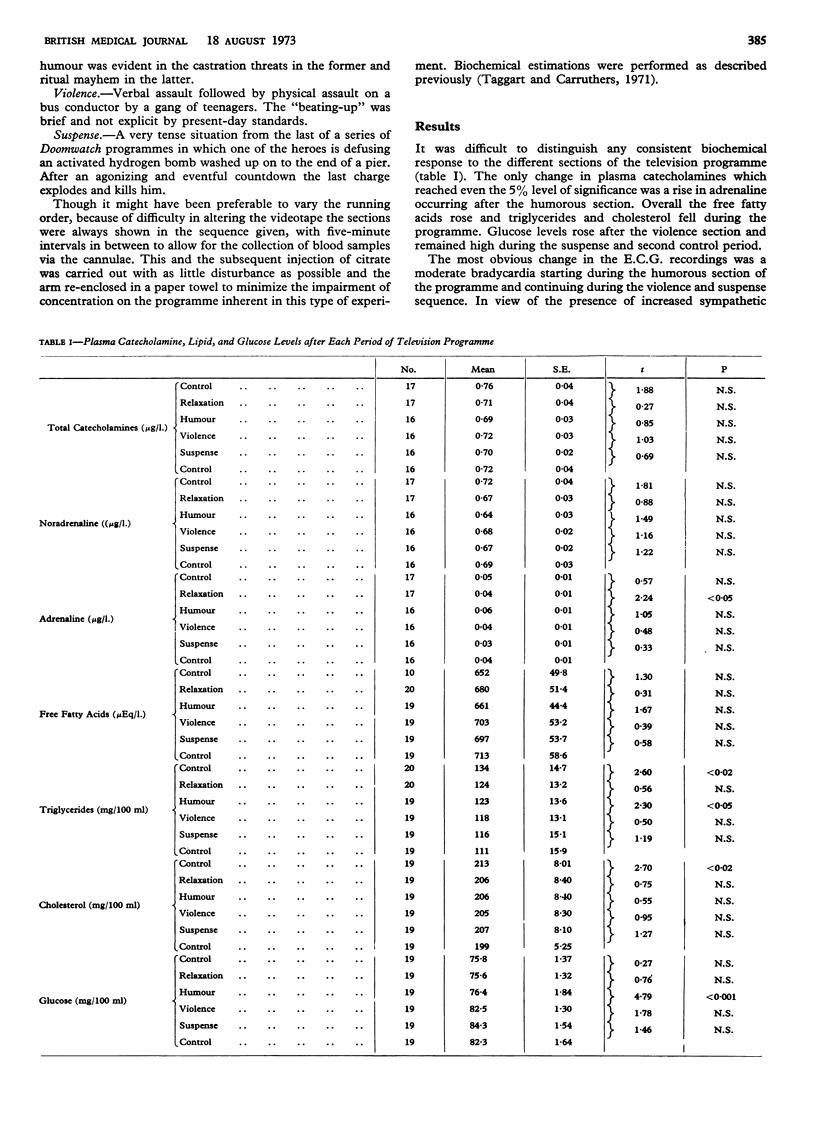
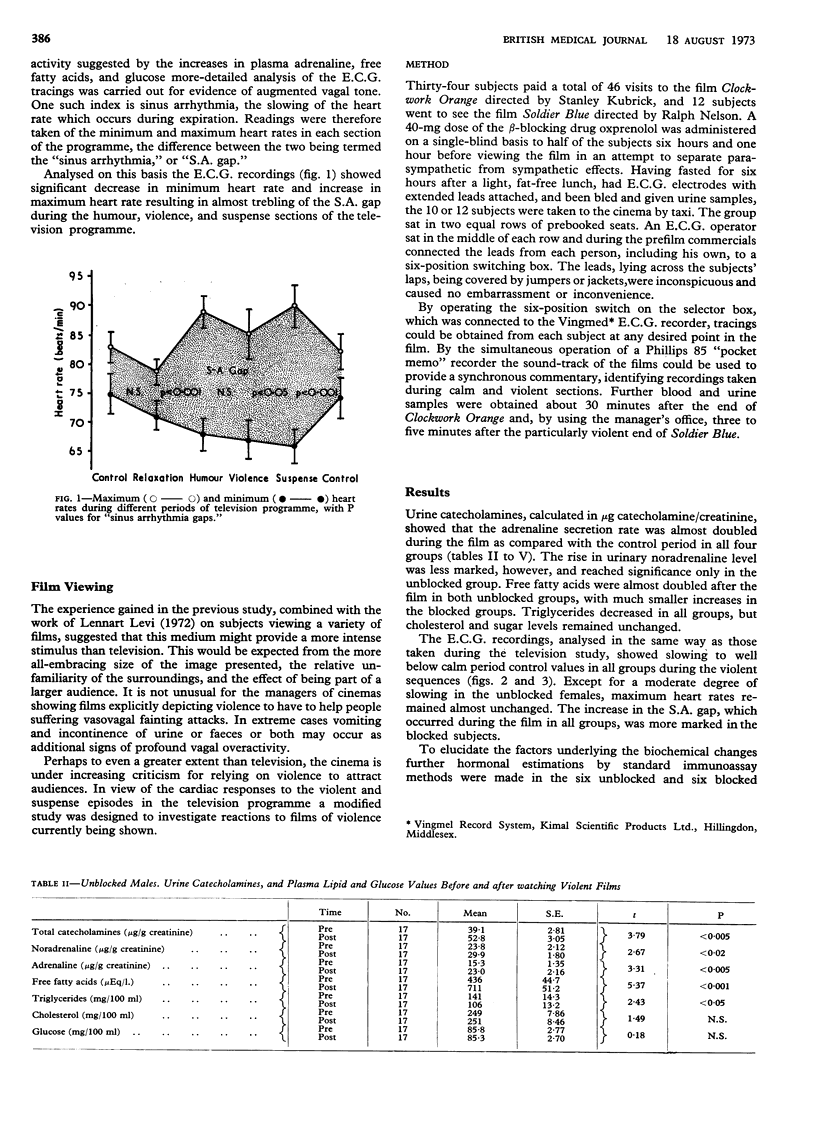
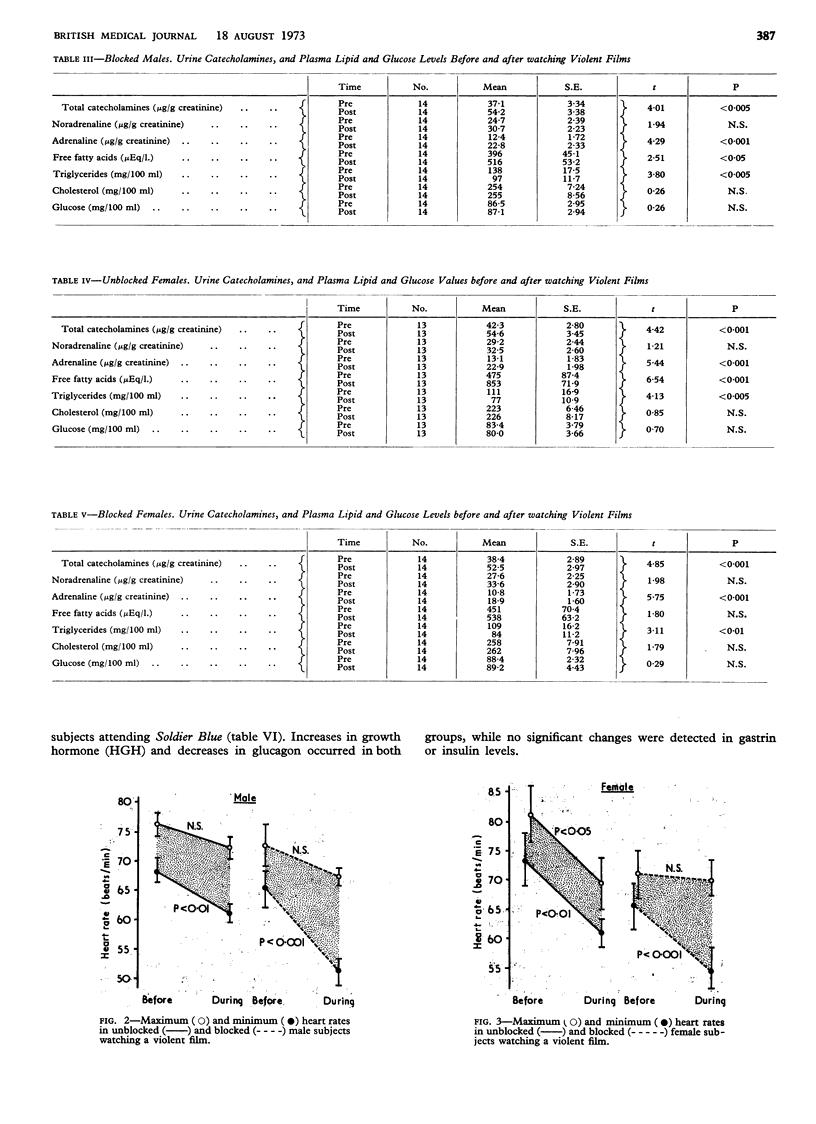
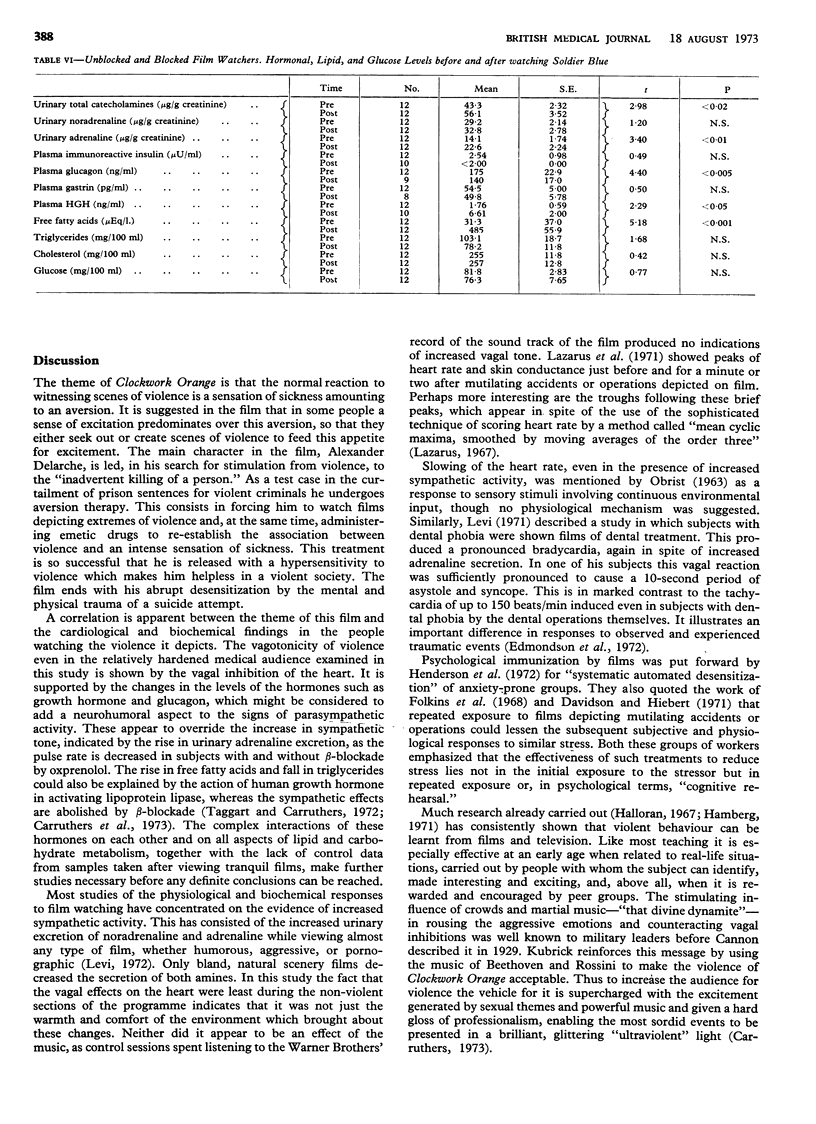
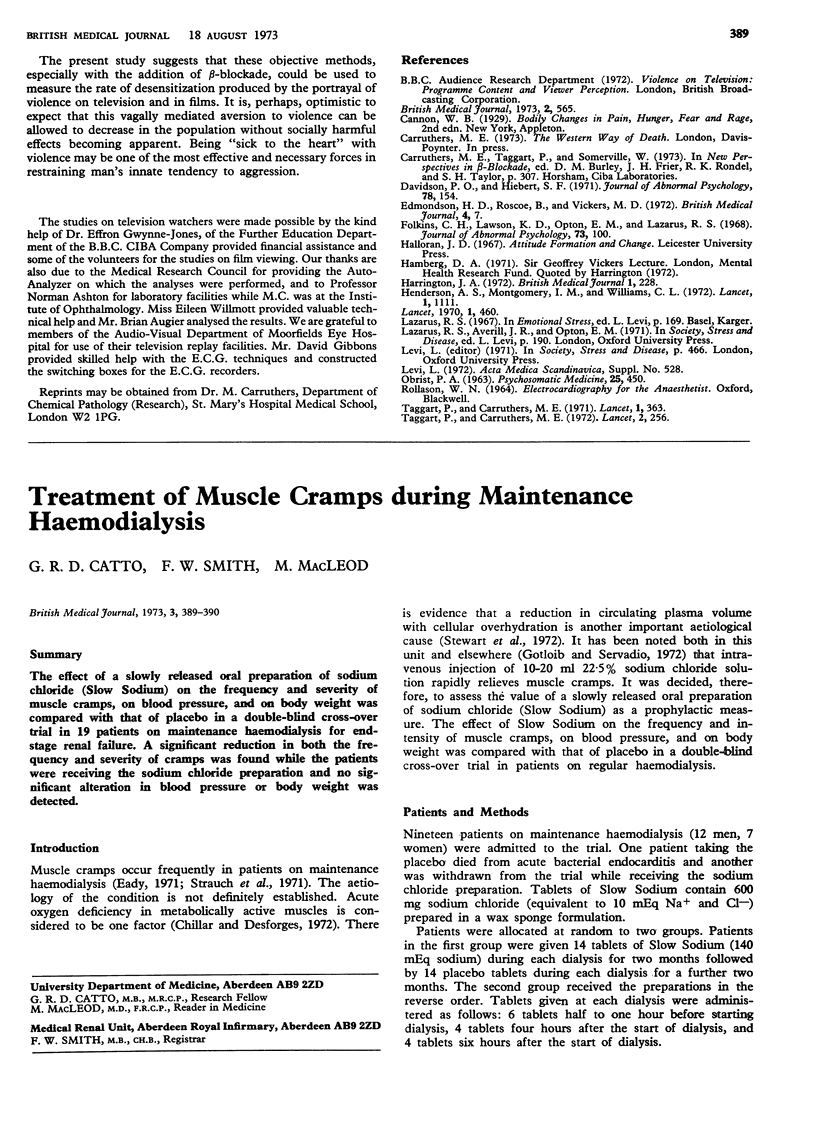
Selected References
These references are in PubMed. This may not be the complete list of references from this article.
- Edmondson H. D., Roscoe B., Vickers M. D. Biochemical evidence of anxiety in dental patients. Br Med J. 1972 Oct 7;4(5831):7–9. doi: 10.1136/bmj.4.5831.7. [DOI] [PMC free article] [PubMed] [Google Scholar]
- Folkins C. H., Lawson K. D., Opton E. M., Jr, Lazarus R. S. Desensitization and the experimental reduction of threat. J Abnorm Psychol. 1968 Apr;73(2):100–113. doi: 10.1037/h0025490. [DOI] [PubMed] [Google Scholar]
- Harrington J. A. Violence: a clinical viewpoint. Br Med J. 1972 Jan 22;1(5794):228–231. doi: 10.1136/bmj.1.5794.228. [DOI] [PMC free article] [PubMed] [Google Scholar]
- Henderson A. S., Montgomery I. M., Williams C. L. Psychological immunisation. A proposal for preventive psychiatry. Lancet. 1972 May 20;1(7760):1111–1112. doi: 10.1016/s0140-6736(72)91441-9. [DOI] [PubMed] [Google Scholar]
- OBRIST P. A. CARDIOVASCULAR DIFFERENTIATION OF SENSORY STIMULI. Psychosom Med. 1963 Sep-Oct;25:450–459. doi: 10.1097/00006842-196309000-00005. [DOI] [PubMed] [Google Scholar]
- Taggart P., Carruthers M. Endogenous hyperlipidaemia induced by emotional stress of racing driving. Lancet. 1971 Feb 20;1(7695):363–366. doi: 10.1016/s0140-6736(71)92207-0. [DOI] [PubMed] [Google Scholar]
- Taggart P., Carruthers M. Suppression by oxprenolol of adrenergic response to stress. Lancet. 1972 Aug 5;2(7771):256–258. doi: 10.1016/s0140-6736(72)91689-3. [DOI] [PubMed] [Google Scholar]


